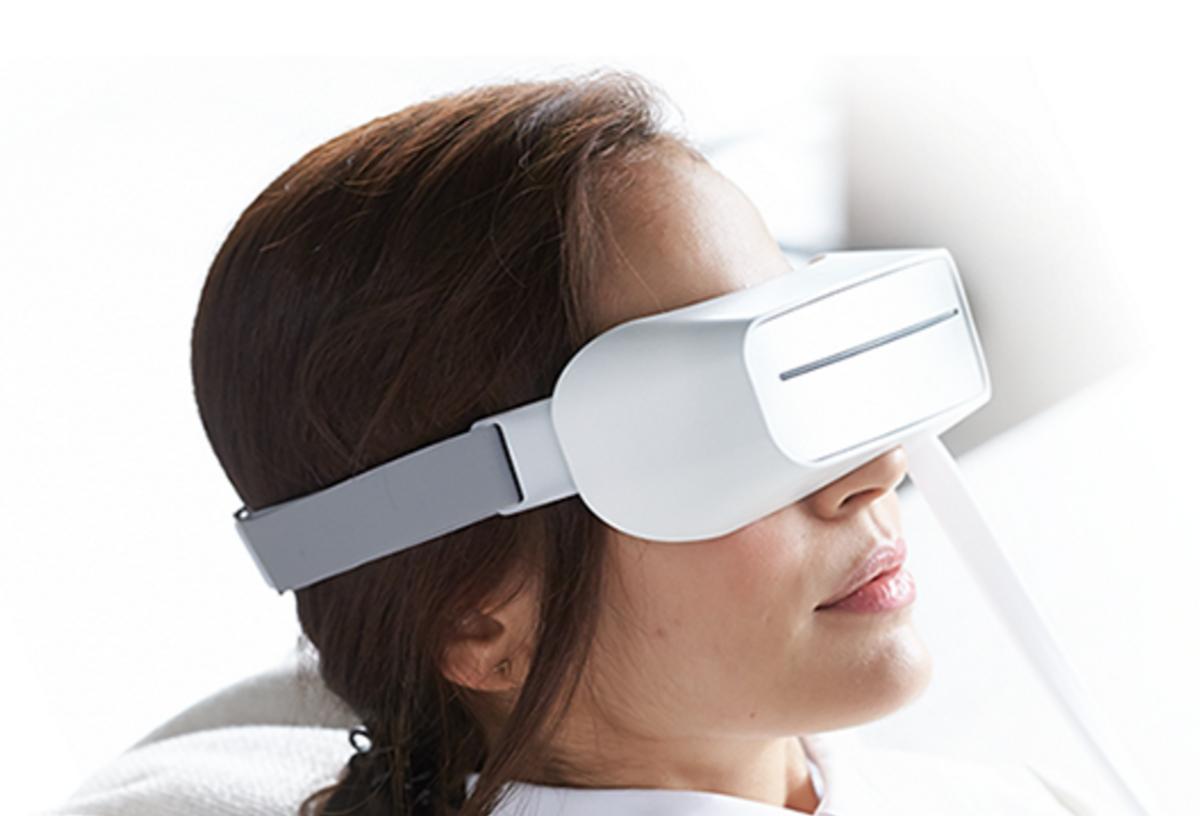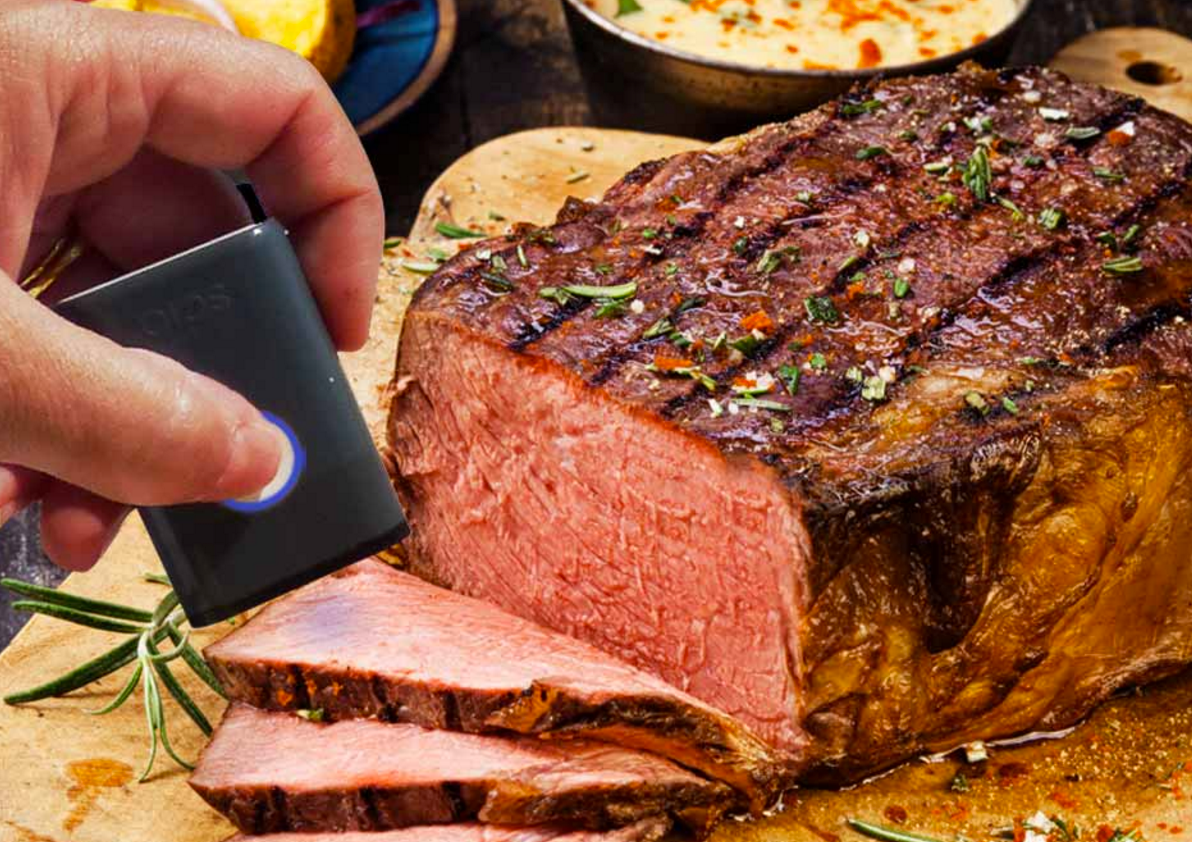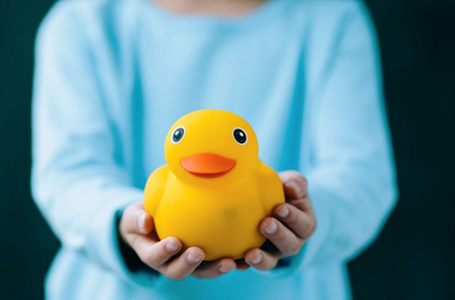What You Won't Miss At CES (An Unconventional Preview)
Don’t let anyone tell you that CES isn’t fun. There’s nothing like getting to see all the new bling first hand, or even, as luck would have it, to have a great deal of it disclosed to you before even packing the first pair of underwear (required) or stick of deodorant (often not, it sometimes seems), or even booking your flight (note to self: get on that).
At this year's CES, everything that was the next big thing last year will be that much more this year. There’s no such thing as gluttony in sin city, where excess is table stakes.
Take virtual reality: we’ll see more HMDs (and more almost-finished HMDs) and more games and more VR cameras and more VR peripherals and more things pretending to be VR, all whetting the appetite of an industry absolutely famished for something new.
Sheri’s Ranch, a Las Vegas brothel, even sent out a press release in an attempt to combat the frothiness of VR at CES, specifically as it applies to pornography. Red Diamonds, a Sheri’s “courtesan,” pointed out that “Real sexual relations lead to real relationships with real women. Virtual reality couldn’t teach a man what I could teach him.” Adds courtesan Amber Lynn: “But at what cost? Sex that comes so effortlessly will eventually become passionless and mundane. People will forget how gratifying and exciting a genuine tryst can be.”
I know what you’re thinking: that needs some follow up investigation, but we cannot meet with everyone, leaving some categories by the wayside, even if some of those topics appeal to your curiosity. Did you know that there’s a company called "Aerodrome" exhibiting at CES? It operates teaching airports for commercial drone flights. They’ll be talking about a droneport that will soon be opened.
Because we won’t be visiting with any of these, I thought I would present you with a preview of what you won’t be missing, like In&Motion’s Smart Ski Airbag Vest.
Or Prynt, which makes a smartphone case that . . . well, it prints pictures from your smartphone. For $149, you can attach a photo printer to your phone. When the ink runs out (no word on the cost of replacement cartridges), you’ll realize why we’ve come to store our photos digitally and slather them all over Instagram. [Editor's Update: The video shows that the ink is stored on the paper, where it gets heated to show the image. The ink is not in a cartridge, contrary to my snotty remark.]
Get Tom's Hardware's best news and in-depth reviews, straight to your inbox.
Wearables will be big, but crazy wearables will be bigger. For instance, Gemio is a bracelet with the purpose of combining technology and friendship. (And you thought the two didn’t mix!) Various light patterns communicate agreed-upon messages between wearers, like Morse code, when text messaging just isn’t enough. How do you say LOL in Gemio? This bracelet also uses color sensing to change its colors to match your outfit, and it can pulse to whatever music you’re listening to. It also turns into an invisibility cloak when it senses your enemies are near. (OK, maybe I made the last one up.)
Oh, you’ll miss Connectify, which makes a product called Speedify, and another company called Scanify.
You’ll miss Pixie Technology, which reasons that if you have an Internet of Things (IoT), you’ve got to be able to find those Internetted things. Naturally, its Pixie Points is all about the “location of things.” I’d have just called it Findify.
Healthnuts
If you have virtually any health-related issue, or want to, CES has a product that will solve it for you. CES may secretly exist to create the very problems that its exhibitors can solve. And this year’s health-related technology isn’t just passively monitoring your steps and heartbeat any more. We’re talking potential nerve damage here.
Take ReliefBand Technologies, which makes a wearable that treats nausea and vomiting from morning and motion sickness by using programmed pulses with “highly specific waveform, frequency, and intensity to stimulate the median nerve on the underside of the wrist.” By doing so, it’s inserting itself into neural pathways to control nausea.
BioTrak makes a wearable called HALO, which helps with tension headaches and migraines. It does so by alerting its wearers of too much muscle tension. It also comes with an app that is intended to guide the wearer through a series of relaxation exercises. Over time, the body is trained to eliminate the tension that produces these headaches. The company says nothing about dealing with your mother-in-law.
And then there’s this: The Aurai eye massager. Because, why not, especially after a long day of VR. It's sort of the anti-VR, if you will.
Healthcare isn’t just about relieving pain; it's also about simply being healthy. InBody is showing a wearable that can detail your body composition, and Fabulasys makes a product called MOTIO, which takes emotions into account when monitoring health status.
No stone unturned!
When I say "wearable," you’re likely thinking about bracelets and watches, but that’s so Q3 2015. BodyCap makes e-Celsius Performance, which is an ingestible for monitoring your core body temperature.
Speaking of core, Slendertone’s Electrical Muscle Stimulation device, called Connect Abs, will electrically pummel your abdomen into a six-pack. If I’m tempted, I’ll grab one of the 2,000 selfie sticks and do a before-and-after shot, maybe using my new Prynt smartphone case.
While I’m measuring my core temperature, sending pulses down my arm, and shocking my stomach into PTSD, I may as well track my hemoglobin, thanks to Ember, from Cercacor.
A company called LEVL has a device (a sensor) that can measure the acetone concentration in your breath, and translate that into how well you burn fat (or how badly you need to brush and floss?).
DietSensor uses infrared spectroscopy to look at what chemicals are in your food and drink. The sensor determines how a substance’s molecules interact with light. Really, this is for those with conditions like diabetes and other diseases that require strict attention to diet, and the sensor can calculate what foods to increase or decrease based on your health profile.
Sure, but can it examine my poo?
Liquidify
It’s not all about health at CES; sometimes it’s about the liquids. There’s where D-vine comes in. If you’re tired of those friends and neighbors who can discern a wine’s vintage and explain the life history of its grapes, then you’ll enjoy this: It’s a device into which you pour your wine, which then detects what kind it is and brings it to the perfect temperature and aeration.
CES will also see the unveiling of the Gyenno Cup, which is a cup with an LCD screen that tells you how much liquid you’re drinking, how long that liquid has been sitting, and even reminding you to drink! How have we lived without this for so long?
It gets better. One company is showcasing its Ripple Maker and accompanying Ripple app, whereby you can send an image from your smartphone to be reproduced on your next latte or cappuccino. If Starbucks adopts this, that annoying person’s order might be: half-caf extra foam soy cappuccino, extra hot, extra shot, two pumps, and the picture of my two kids, the one where they’re being goofy, but please crop out the living room mess in the background...
Let’s not leave it out Tea. Teforia has "the world’s first intelligent tea infuser." This sucker uses machine-learning (the company cleverly calls the technology "SIP") to deliver a perfect cup, able to "pull out the most optimal flavor notes for each individual varietal of tea."
For The Kids
If adults aren’t easily fooled into buying a connected friendship bracelet or bad-breath monitoring devices, let’s turn to kids, or parents who obsess over the health of their kids. There’s a Baby Tech Awards Summit at CES.
Apparently kids are looking at screens all day, so Medical Wearable Solutions created EyeForcer, which uses smart technology that can control the use of these lovely and addictive computing devices, thereby cutting down on screen time and, according to the company in a wonderful alliteration, “promoting proper posture.” That is, if kids are playing with a device too long, or start to slouch while wearing these special glasses, the glasses will switch off the device, thereby eliminating one more thing off your parental to do list.
But there’s another parent that MadRat Games' SuperSuit is targeting. It’s the one who wants little Johnny to play games. This is an entire wearable gaming platform. Put it on, and you can play games with your family and friends outdoors. The company claimed that it is a great fit for the emerging “third space,” meaning the one between the indoors where screens are prevalent, and the forgotten outdoors. It also claims the games are “exciting but non-violent” and yet, if you watch the video above, you’ve got kids pretending to blast their parents into oblivion.
And then there’s Edwin, the world’s first smart duck, a learning toy that’s essentially a controller to a companion app, including a sleepy time app with “exclusive lullabies and white noise,” and the company will have a preview of a temperature gauge that measures the surface temperature of a child’s skin.
No Sleep ‘Til Brooklyn
Las Vegas is certainly a nighttime city, but we do have to get some sleep eventually, and thankfully there are many technologies at CES to help with that. Take SensorWake, an alarm clock that somehow manages to output your favorite smells instead of an alarm bell. Well, maybe not your favorite smells but some favorite smells, like seaside, chocolate, espresso (maybe with a Ripple app image), and, why not, croissant (hopefully a buttery, flaky one).
Thanks to German-based Variowell Development, there will be a bed that collects data on the sleep phases you go through (it uses other wearables that collect this info) and adjusts the bed accordingly. For example, it makes the bed more firm during light sleep, and softer so as not to disturb deep sleep. Don’t ask what it does during “adult activity.”
MetroNaps, a company that makes nap pods for businesses, will be at CES, and you just might find me there, wearing a Melomind from MyBrain Technologies. I'm going to need them both.
Fritz Nelson is the Editor-In-Chief of Tom's Hardware. Follow him on Twitter, Facebook and Google+. Follow us on Facebook, Google+, RSS, Twitter and YouTube.
-
steaburn1 "When the ink runs out (no word on the cost of replacement cartridges), you’ll realize why we’ve come to store our photos digitally and slather them all over Instagram."Reply
Did you even watch the video you shared? It clearly states that the ink is stored in the paper and is heated to display the image. Hmphhh.... -
FritzEiv You're right! A hastily made effort to make a joke. I'll amend the text a bit. (And yes, you're also right, the point still stands that it will be expensive. I'm sure that paper isn't cheap.)Reply -
f-14 stop covering the VR... you're going to walk off a cliff or infront of traffic. it's about as modern and realistic as 1950's florescent lighting. and if i hear anything about heart beat pedometer watches i'm going to laugh. that was terrible CES coverage last year and quite frankly less interesting than star/globe magazine and their 3 headed alien hillary clinton lovechild adopted by the kardashiansReply
-
Realist9 Ok, who stopped at "Sheri’s Ranch, a Las Vegas brothel" and did a google search before continuing with the article?Reply
C'mon, you know you did. -
Nintendork At least for real photography, not the joke (without a deep meaning) photos most people take nowadays "because they can" I would prefer to still have analago cameras with film.Reply
And a Polaroid too. -
Baron_ "When the ink runs out (no word on the cost of replacement cartridges), you’ll realize why we’ve come to store our photos digitally and slather them all over Instagram."Reply
That worked out great for all my photos stored on MySpace! :-P
Print what you care about.
https://vimeo.com/49425975







